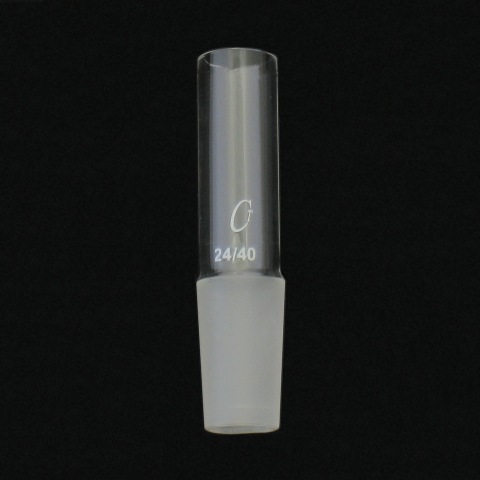-
SCAM WARNING! See how this scam works in Classifieds.
-
The Frolic by Limelight Giveaway is over. Congratulations to the winner: Numerous_Nothing!
You are using an out of date browser. It may not display this or other websites correctly.
You should upgrade or use an alternative browser.
You should upgrade or use an alternative browser.
Discontinued Glass Symphony XLR
- Thread starter jojo monkey
- Start date
So, why didn't you tell me you were selling other stuff? I feel I must have one of these.

I have a few extra? I'll send a note.
Very soon there will be a clear way to know what's in stock.
I was offering the printing of a stand to new sales for a bit. I have not been stocking it until the last run. One reason was to evaluate different printers and services. Another reason was to give me the option to refine the stand.
Just recently there was a delay because I tried a service that moved my order to a printer I did not spec out and they could not make the stand properly. It looked like it was made out of pudding.
I now have a good roster of printers. The most recent printer made the heaviest stands to date. (200g vs 130g) They are all supposed to be 20% filled but that does not mean some do more or less.
The plans are here if you want to modify the design or print it yourself. I like PLA + wood but there are lots of materials that can be used. Want a glow in the dark stand or a navy blue one? PLA comes in lots of colors.
https://www.tinkercad.com/users/7XSnLe7HYLr-glass-symphony
I have nothing concrete yet, but I do plan on making a version that uses ground glass joints. This will cost quite a bit more so the current option will have the most bang for the buck.
MileHighHuman
Well-Known Member
Im still using the GS as my daily driver.
Flavor and extraction speed are unmatched.
Im really interested in the new stand.
Glass joints would be awesome, but i'm still considering the wood version.
@Joaon have you noticed any side effects (flavor) from the wood stand without glass ground joints?
Also do you have any concern with the stand not being heavy enough to keep the GS from tipping?
Once again, even with the huge size of this device, the GS results are worth it.
Also are there any other members wanting the handle to be 50% shorter length?
Would the shorter style handle effect the performance? @jojo monkey

Flavor and extraction speed are unmatched.
Im really interested in the new stand.
Glass joints would be awesome, but i'm still considering the wood version.
@Joaon have you noticed any side effects (flavor) from the wood stand without glass ground joints?
Also do you have any concern with the stand not being heavy enough to keep the GS from tipping?
Once again, even with the huge size of this device, the GS results are worth it.
Also are there any other members wanting the handle to be 50% shorter length?
Would the shorter style handle effect the performance? @jojo monkey

buddingglasshead
Well-Known Member
Im still using the GS as my daily driver.
Flavor and extraction speed are unmatched.
Im really interested in the new stand.
Glass joints would be awesome, but i'm still considering the wood version.
@Joaon have you noticed any side effects (flavor) from the wood stand without glass ground joints?
Also do you have any concern with the stand not being heavy enough to keep the GS from tipping?
Once again, even with the huge size of this device, the GS results are worth it.
Also are there any other members wanting the handle to be 50% shorter length?
Would the shorter style handle effect the performance? @jojo monkey

I'd love to add the GS to my VAS addiction, but my main hold out is 18mm. Almost all of my glass is 14mm. I have a few 18mm female pieces, but don't want to limit myself to just those and they are quite large.
Maybe one day when I get back in glass I'll make sure and pick up some 18mm to eventually get the GS.
lazylathe
Almost there...
I'd love to add the GS to my VAS addiction, but my main hold out is 18mm. Almost all of my glass is 14mm. I have a few 18mm female pieces, but don't want to limit myself to just those and they are quite large.
Maybe one day when I get back in glass I'll make sure and pick up some 18mm to eventually get the GS.
Why not just buy a 14 to 18 adapter?
Problem solved! Lol.
buddingglasshead
Well-Known Member
Why not just buy a 14 to 18 adapter?
Problem solved! Lol.
Sure but it would extend the already "too" tall set up for 14mm. Not trying to run a circus (crazy amount of hand movements) just to get medicated.
Trust me, I've thought about just using an adapter like that, but there's no way that would be an easy feat to use with most of the glass. Most of my glass is meant for dabbing.

Now... If say the bowl was 14mm instead of 18mm then nothing would need to change.
Still a fantastic device no matter what and still something I want; it just isn't on the top of the list due to being 18mm.
lazylathe
Almost there...
Sure but it would extend the already "too" tall set up for 14mm. Not trying to run a circus (crazy amount of hand movements) just to get medicated.
Trust me, I've thought about just using an adapter like that, but there's no way that would be an easy feat to use with most of the glass. Most of my glass is meant for dabbing.
Now... If say the bowl was 14mm instead of 18mm then nothing would need to change.
Still a fantastic device no matter what and still something I want; it just isn't on the top of the list due to being 18mm.
I suggested an adapter because your original post did not include that your 14mm's were all meant to be used for dabbing. LOL!! That changes things a lot...
Why not just buy a $30 China rig to see if it is something you really want?
The few I have seen for sale second hand do not last long either, so an easy sell vape.
The 14 to 18 I adds less than an inch to my water tools.
I have some 10mm glass hidden away somewhere and the GS would look like a spaceship next to them!!
I also have some 14mm glass that is big enough to support the GS with no issues.
Hopefully one day you will get to try the beast!!
@MileHighHuman Thank you for the updated review.
A small lab stand could hold the vape up where you want it. There are 12"to36" stands on amazon/ebay. Run w/o the handle to keep the setup small. You would only need to hold the bubbler and the bowl to the fixed vape. If you clamp the 14 to 18 adapter to a bowl you'll only have 2 moving parts - the bubbler and the bowl assembly. The extended bowl could also help keep your face away from the vape if the bubbler is very small.

The center of gravity is very low with the stand. The shape rolls in a good way when bumped because it pivots off the many corners.Also do you have any concern with the stand not being heavy enough to keep the GS from tipping?
There should be no performance change other than less drag. You can run w/o a handle now. I promise to explore handle options.Also are there any other members wanting the handle to be 50% shorter length?
Would the shorter style handle effect the performance? @jojo monkey
Hi, buddingglasshead. It's a little extreme but keeps with the theme....Not trying to run a circus (crazy amount of hand movements) just to get medicated.
A small lab stand could hold the vape up where you want it. There are 12"to36" stands on amazon/ebay. Run w/o the handle to keep the setup small. You would only need to hold the bubbler and the bowl to the fixed vape. If you clamp the 14 to 18 adapter to a bowl you'll only have 2 moving parts - the bubbler and the bowl assembly. The extended bowl could also help keep your face away from the vape if the bubbler is very small.

(to everyone too) If there was a 14mm bowl, what 18mm bowl would you want it to mirror? Would you rather have a 14mm bowl or a 18mm GS body?If say the bowl was 14mm instead of 18mm then nothing would need to change.
Last edited:
StormyPinkness
Rhymenocerous ʕ•ᴥ•ʔ
I started looking at handle alternatives, I haven't really found anything yet. I need to look again though, it's been awhile.Also are there any other members wanting the handle to be 50% shorter length?
Would the shorter style handle effect the performance? @jojo monkey

I don't really have a problem with the size, I just think it's an area that will let me personalize it. I feel like a knob shape could really make it much smaller while keeping it sturdy to hold as long as the airflow was fine.
I would vote funnel bowl, easy to use and good for small or medium/large amounts.(to everyone too) If there was a 14mm bowl, what 18mm bowl would you want it to mirror? Would you rather have a 14mm bowl or a 18mm GS body?
Edit: Oh I didn't see the part about the 18mm gs body, that's interesting. I'll have to think about that, I guess it would be compatible with more bowls. I'm not sure what other bowls I'd want to use it with though...
Last edited:
lazylathe
Almost there...
@MileHighHuman
(to everyone too) If there was a 14mm bowl, what 18mm bowl would you want it to mirror? Would you rather have a 14mm bowl or a 18mm GS body?
Funnel bowl!!
Do you make any other bowls??

Oogendoogan
Well-Known Member
What temp are ppl running they’re GS? Pulled out this bad boy after a long day. Set my PID settings to the new ones @jojo monkey gave me a couple pages ago. Right now I have my temp set at 922 and it’s sitting at 906. Let me know if anyone has any advice for me. I just wanna make sure these are safe temps. I used to use different PID settings and slightly diffent temps. This seems to work fine. Just wanna make sure everything sounds normal with it running at 906 when set to 922. It used to run exactly 20 degrees below. If anyone has advice thank you.
Hope everyone is having a good evening.
Cheers
Hope everyone is having a good evening.
Cheers

Cl4ud3
Well-Known Member
(to everyone too) If there was a 14mm bowl, what 18mm bowl would you want it to mirror? Would you rather have a 14mm bowl or a 18mm GS body?
Funnel going to 14 please

@Oogendoogan I run mine at 860 but it's a newer heater.
Last edited:
StormyPinkness
Rhymenocerous ʕ•ᴥ•ʔ
In the funnel and glass mesh bowls with the new heater I set it around 750. In the bigger stadium bowl I set at around 850.What temp are ppl running they’re GS? Pulled out this bad boy after a long day. Set my PID settings to the new ones @jojo monkey gave me a couple pages ago. Right now I have my temp set at 922 and it’s sitting at 906. Let me know if anyone has any advice for me. I just wanna make sure these are safe temps. I used to use different PID settings and slightly diffent temps. This seems to work fine. Just wanna make sure everything sounds normal with it running at 906 when set to 922. It used to run exactly 20 degrees below. If anyone has advice thank you.
Hope everyone is having a good evening.
Cheers
When I was talking to @jojo monkey about trying to use concentrates with it he said he tests to 950 and to not go above that. I think your actual temps sound about right, mine is around the same range. I think it changes over time a little as it get's used.
MileHighHuman
Well-Known Member
I'd love to add the GS to my VAS addiction, but my main hold out is 18mm. Almost all of my glass is 14mm. I have a few 18mm female pieces, but don't want to limit myself to just those and they are quite large.
Maybe one day when I get back in glass I'll make sure and pick up some 18mm to eventually get the GS.
I understand it more simple to keep all your rigs the same joint size, but just get some cheap 18mm piece and then buy this beast. It'll be worth every penny.
@MileHighHuman Thank you for the updated review.
The center of gravity is very low with the stand. The shape rolls in a good way when bumped because it pivots off the many corners.
There should be no performance change other than less drag. You can run w/o a handle now. I promise to explore handle options.
Hi, buddingglasshead. It's a little extreme but keeps with the theme....
A small lab stand could hold the vape up where you want it. There are 12"to36" stands on amazon/ebay. Run w/o the handle to keep the setup small. You would only need to hold the bubbler and the bowl to the fixed vape. If you clamp the 14 to 18 adapter to a bowl you'll only have 2 moving parts - the bubbler and the bowl assembly. The extended bowl could also help keep your face away from the vape if the bubbler is very small.
(to everyone too) If there was a 14mm bowl, what 18mm bowl would you want it to mirror? Would you rather have a 14mm bowl or a 18mm GS body?
This is perfect news. Thank you!
About to PM you and purchase one of the current stands.
Can't wait for those other handle options. I've attempted to use mine without the handle once, but felt it had my hand just a tad too close to the heater. I'd hate to be baked and accidentally grab the heater haha.
Maybe even making the handle 75% shorter would be probably perfect. Enough space to prevent touching the hot heater and enough glass to grab, while cutting down the overall size of the GS. Just my suggestion.
If there are any 14mm bowls sold, my vote is for the funnel style.
Would reducing the GS body from 24mm to 18mm have any effect on the surface area of the heat? Due to the current 24mm size being wider, im assuming it allows for the heat to have more surface area compared to if it was 18mm. I like to fill my bowls from edge to edge and so im thinking making the GS in 18mm joint size would make the bowls have less surface area = less extraction / vapor. Maybe not? Just my thoughts.
buddingglasshead
Well-Known Member
I understand it more simple to keep all your rigs the same joint size, but just get some cheap 18mm piece and then buy this beast. It'll be worth every penny.
That's definitely the plan.
 Just funds being really tight at the moment between everything else going on and all the other vapes that VAS has guided me to. GS is certainly high up on that list. I love everything I've read and seen about it. It certainly is a monster!
Just funds being really tight at the moment between everything else going on and all the other vapes that VAS has guided me to. GS is certainly high up on that list. I love everything I've read and seen about it. It certainly is a monster!StormyPinkness
Rhymenocerous ʕ•ᴥ•ʔ
If anyone is looking for a stir tool that's long enough @mistvaporizer sells the standard ear pick ones attached to different woods. I love my purple heart one:


The round collar is for stirring stems 14mm, you put it on the joint so you can stir and none spills out.


The round collar is for stirring stems 14mm, you put it on the joint so you can stir and none spills out.
Oogendoogan
Well-Known Member
Ok thanks for all the feedback. I am sorry for being slow to respond. I think those new PID settings seemed to change things a little. I’m thinking about going back to the settings I first used when I got the GS (settings the original owner used) because it seemed like I was getting lower temp hits at higher temps with the new ones? Anyways thanks to everyone who gave me some feedback. I tried the EQ baskets in the funnel bowl(think it’s the funnel, the shorter one not the stadium) and I found those to be great extraction wise, but they also seemed to dilute the vapor a bit just like they do in the FP. Today I am gonna try my older PID settings and try 950 for those high temp face melters I love. Not worried about the GS delivering at all. This vape along with my flowerpot and supreme V3 stand out as heavy hitters that medicate me much faster and heavier than other vapes. GS is by far the fastest one. So free flowing. The vapor just shoots into your lungs. By the time you know you took a huge hit your already high as hell blowing out clouds. Gotta love the GS  I hope everyone is having a great day. Stay vaped
I hope everyone is having a great day. Stay vaped 

Cheers
 I hope everyone is having a great day. Stay vaped
I hope everyone is having a great day. Stay vaped 

Cheers

MileHighHuman
Well-Known Member
Bought the 3D wood stand from Jojo and im so glad my brain decided to purchase.
Its very stable and keeps the profile / vaporizer much lower and less vulnerable to knocking over.
If you own the Glass Symphony I'd definitely recommend picking up one of these. Its necessary.

Now all i'm wanting is the ~ 50% shorter handle, then this thing will be pretty much complete to me.
The 18mm 3 way adapter would be nice for size reduction, but id rather keep the current larger 24mm size 3 way adapter to keep the Glass Symphony's top / max performance.

Its very stable and keeps the profile / vaporizer much lower and less vulnerable to knocking over.
If you own the Glass Symphony I'd definitely recommend picking up one of these. Its necessary.

Now all i'm wanting is the ~ 50% shorter handle, then this thing will be pretty much complete to me.
The 18mm 3 way adapter would be nice for size reduction, but id rather keep the current larger 24mm size 3 way adapter to keep the Glass Symphony's top / max performance.

Zow237
Well-Known Member
@MileHighHuman so happy you've found "your" vape! I can't wait to get mine back from @Oogendoogan  got the news the other day. Can't wait!
got the news the other day. Can't wait!
 got the news the other day. Can't wait!
got the news the other day. Can't wait!MileHighHuman
Well-Known Member
@MileHighHuman so happy you've found "your" vape! I can't wait to get mine back from @Oogendoogangot the news the other day. Can't wait!
Definitely pick up one of the 3D wood stands.
Its making the GS even more easy / enjoyable to use

StormyPinkness
Rhymenocerous ʕ•ᴥ•ʔ
I was checking out laboy glass for alternate handles, you can sort by joint size (https://laboyglass.com/24-40.html), and I thought these might work depending on the kind of handle you want:









Just need to make sure a screen can be added so no glass beads fall out.









Just need to make sure a screen can be added so no glass beads fall out.
MileHighHuman
Well-Known Member
@StormyPinkness Thank you!
My favorite from those are these two. Does anyone think either are too short and do we think they have an open hole for airflow?


My favorite from those are these two. Does anyone think either are too short and do we think they have an open hole for airflow?


Last edited:
StormyPinkness
Rhymenocerous ʕ•ᴥ•ʔ
Looking at it closer I think it's got a narrow hole in the knob part. The product page says it has a "#15 O-RING Joint"? Not sure what it is, I'll have to google it.@StormyPinkness Thank you!
My favorite from those are these two. Does anyone think either are too short and do we think they have an open hole for airflow?


https://laboyglass.com/15-o-ring-joint-adapter-with-24-40-inner-joint.html
The second one looks like a pretty wide open tube, I'm just not sure where to put the screen to stop beads from falling out.
https://laboyglass.com/pour-out-adapter.html
This might be a good short one if you could get a screen in it:
https://www.ctechglass.com/ctech-gl...2440-ground-std-taper-lab-glassware-p-83.html

Unfortunately it doesn't say how long/tall it is. The joint is 40mm tall and so if the picture is accurate I'd guess the handle part is 60-80mm?
I've been looking at ctechglass too, which has a lot of the same stuff as laboy. You can't sort by joint size, but they have almost everything in 24/40.
https://www.ctechglass.com/glassware-c-46.html
I am w/ ya on the handle shape. I like the idea of a knob shape that has a flat bottom so you can rest the GS down. What is possible is another matter. I don't want to make something too expensive.knob shape
The funnel is a lovely thing.Do you make any other bowls??
I like that! Fantastic color. Is it magnetic? A magnet on the clamp near the handle is a nice tool holding spot.If anyone is looking for a stir tool that's long enough @mistvaporizer sells the standard ear pick ones attached to different woods. I love my purple heart one:


The round collar is for stirring stems 14mm, you put it on the joint so you can stir and none spills out.
Great pics as always.
I just wanna make sure these are safe temps.
Your temps are fine. Sub 950F is best. The other rule is don't run it so high that you can see the heater glowing with the lights out.
The GS is measuring the temps inside a steel cartridge. That cartridge is surrounded by a heat transfer material and then has to warm the glass. Heat is lost all along the way. The cartridge is good to 1200F. The glass is good to 500C/931F for working temps but we are not even close to that inside the air path.
I imagine you are using an auber? The vape isn't running lower, it is just that the controller is distorting the numbers. The reason it does this is so you can run it higher than 999F or have an offset due to materials.’m thinking about going back to the settings I first used when I got the GS (settings the original owner used) because it seemed like I was getting lower temp hits at higher temps
PSL is the thing that can fuck with your temps. Set it to 1.0 to see the actual temp. Anything else is PSL * the temp for the real temp.
Here is the rdk300 info:
Hold down the knob and enter each code. After you enter the code you can put in the values for each parameter.
RDK-300
#Code 155
PSL 1.00
HL 950
#Code 166
P 25
I 0
D 3
OTH 100
APO = this is your shutoff in min. 0-999.
more info:
http://www.auberins.com/images/Manual/RDK-300_supplementary.pdf
The goal is a stable temp that is -10F below the set temp. Aubers need to run a little off. You can use "P" between 15 to 25 to find a sweet spot.
...
 Update
Updatetldr: Water conditioning adds water to your hit
 ... and a particle sensor might be a neat way to measure the performance of a hit/vape. Oh, and my graph shows how consistent the GS can be.
... and a particle sensor might be a neat way to measure the performance of a hit/vape. Oh, and my graph shows how consistent the GS can be.The air where I live has gotten bad on some days due to forest fires. I got a cheapy air purifier and then it had me wondering if I needed to run it all the time. So last weekend I put together an air quality rig with some part I already had and some new stuff. I thought it would be neat to see what shows up after a hit from the GS.
Big thanks to adafruit.com. Without the arduino libraries Lady Ada wrote I'd be dead in the water and never would have tried this.
The sensor is a plantower pms7003- the blue box in the pic. Inside that 'lil blue box is a laser, a sensor, a fan that draws in air, and a cpu to decode what is going on. All it does is spit out data (the green data in the pic). So how accurate is it? It is made to measure particles with a mass like road dust so I expect it to overestimate the vapor particles.
If I compare the air pollution PM2.5 and PM10 with my local EPA air quality stations the pms7003 matches up or sits in-between. If I run a HEPA filter for 30 minutes I can get most of the numbers to zero.

This not scientific in any way, but I thought I'd take a few measurements and test out some vaping styles. I hooked my sensor to a pc to capture the data.
The particle sensor can't take a direct hit of vapor. Instead, I measured the air 4ft off the floor and 8ft from the vape. So really I am measuring the closed room and how vapor mixes.
The sensor bins sizes and offers numbers for a few volumes. Anything smaller than 2.5 microns can be absorbed right into the bloodstream from the lungs. The 0.3-micron bin has the highest count so I made a graph of that.
The setup:
The FC-ufo and a funnel bowl w/ a fine mesh screen for all of the tests.
0.09 grams for each run
A HEPA air purifier (winix 5300-2) was used to get the particles down to very low numbers before each test. I would shoot for under 50 0.3-micron particles per 0.1 liter and have nothing bigger than 1 micron before testing. The air purifier was running during all the graphed tests.
The GS was set to 770F.
For each of the inhalation runs, I took a single 5 second draw that filled my lungs.

Each style of line is a run. The X is in milliseconds so 1K = 1 second. The Y is the number of 0.3 to 0.49 micron particles per 0.1L.
I would really only look at the data after 100 seconds (100k in the graph). The peaks of many of the runs are missing before the room mixes up and we are really after mixed up air.
The top pink and grey dotted plots are runs where I blew through the handle on the GS and I had no MP on the fc-ufo bubbler. The pink dots are with water in the bubbler and the grey without.
The blue dotted/filled in line and the gold dots are runs where I exhaled a hit with water.
The solid green bars and the orange line are runs where I exhaled and did not use water.
The particle bins have big ranges fom 4-65,000 so I can't show them all in a single graph. if you want to see larger particles or whatever:
https://plot.ly/~symphony.vapor/38.embed
I used the particle sensor a few vaping session and it was neat to see how weak a second hit can be. I had proof that I needed to reload the bowl for a better hit.

This was a fun and informative little experiment. I've always wondered how much water gets added to a hit and this kinda shows what happens to air in the room. Not bad for a $30 sensor.
